When it comes to Marlin fishing, Panamá is unlike any other destination in the world. The ocean conditions are perfect and, when the timing is right, Marlin fishing can be really hot. Panamá also has some of the most remote angling locations in the world. They are essentially inaccessible to all but the few lodges operating in a very hard-to-reach area.

Planning a Marlin trip to Panamá is a bucket list fishing experience. The potential to catch a true trophy is present every day you fish. The long coastlines, beautiful islands, and expansive blue waters make for a special place in the world to chase Marlin. And I’m here to introduce you to it…
Marlin in Panamá: An Introduction
Panamá has two long coastlines but the majority of Marlin fishing is focused on the Pacific Ocean side. That said, the Caribbean fisheries in Panamá have access to Marlin and a number of other exciting species. While the west coast has more infrastructure, the east coast is something to consider for a completely different and productive experience.
In Panamá, the primary targets are Blue and Black Marlin with some Striped Marlin action, as well. Anglers travel from around the world, many in search of a record-breaking fish. The country has destinations that are super easy to reach and others that are among the most remote in the world.
Interesting Marlin Facts
Panamá has a reputation for world-record Marlin but it also boasts robust populations of these fish. The opportunity to reliably find and target record fish is rare. The sheer abundance, however, creates a situation where anglers can push the limits of different line class record attempts.
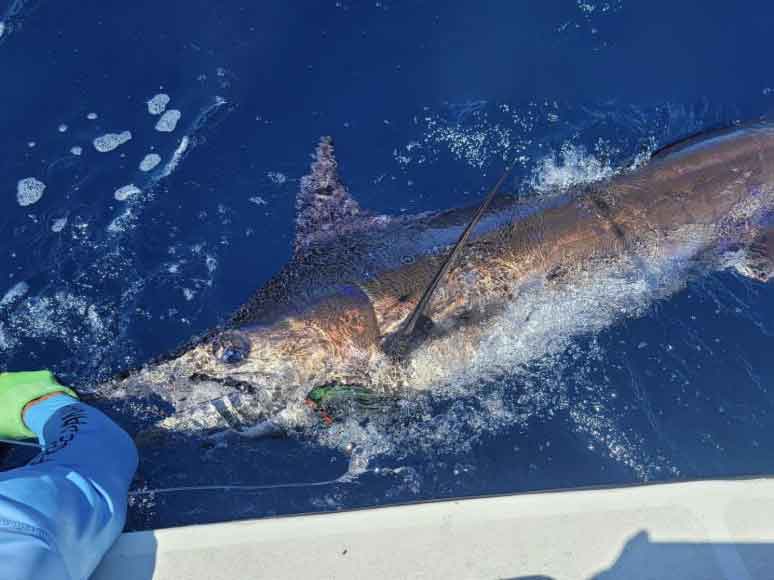
Size. Blue Marlin in Panamá can top 700–800 pounds with some larger fish lurking in the waters. Black Marlin have been caught over 1,000 pounds with a few special specimens hitting the magic 1,200+ pound mark.
Characteristics. The long bill and long body make Marlin unique. While similar in profile to some Sailfish, Blue, Black and even Striped Marlin grow to incredible sizes. They’re lightening fast, reaching swimming speeds up to 70 miles per hour. It’s not uncommon for Marlin to have bursts of speed hitting 20–50 mph as well.
Diet. Marlin are apex predators and they eat a large variety of species. Dorado (mahi mahi), tuna, bonito, and smaller bait fish balls all attract Marlin. They have the ability to spear larger fish but also will stun their prey before eating.
Panamá Marlin Fishing Seasons
Marlin are caught throughout the year in Panamá but some seasons are far more productive than others. For Black Marlin specifically, the winter season is prime with December, January, and February being the best time to plan a trip. Blue Marlin fishing is also good during this period.
Blue Marlin numbers pick up throughout the summer in the southernmost Pacific locations. June, July, and August are excellent with some lead into September as well. They are caught during this timeframe on the central coast as well but the numbers are greater in December in this region.
How to Catch Marlin in Panamá
In Panamá, Marlin fishing techniques are dependent on the charter captain’s preferences. For the most part, the species are caught on experienced charters who know the waters and navigational requirements. They also have the equipment and knowledge necessary to effectively target Marlin. Here are some of the most favored techniques.
Trolling for Marlin
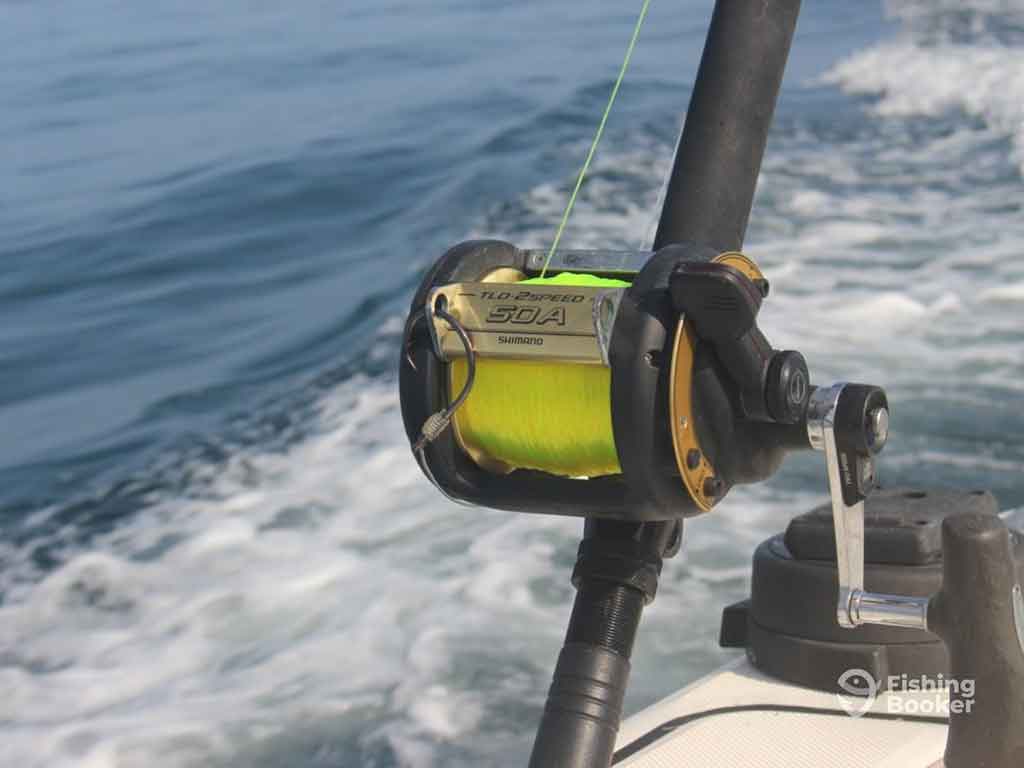
Most Marlin are caught while trolling the sportfishing environment. There are numerous ways to troll for Marlin using live bait, cut bait, and artificial lures. It’s all about covering ground to find the fish. Making noise and disturbing the water to simulate schools of bait fish is the name of the game here.
In Panama, the fish are often located quickly during peak seasons. Trolling at high speeds isn’t always necessary and some charters will revert to slower speeds with live bait attached to single hooks. Full bonito or mullet are among the favorite live bait options.
The spread is important for trolling at any speed. Outriggers are set to spread out lines and cover a wide area. If you book a Marlin charter, plan on spending some time trolling to attract and catch fish.
Casting to Marlin
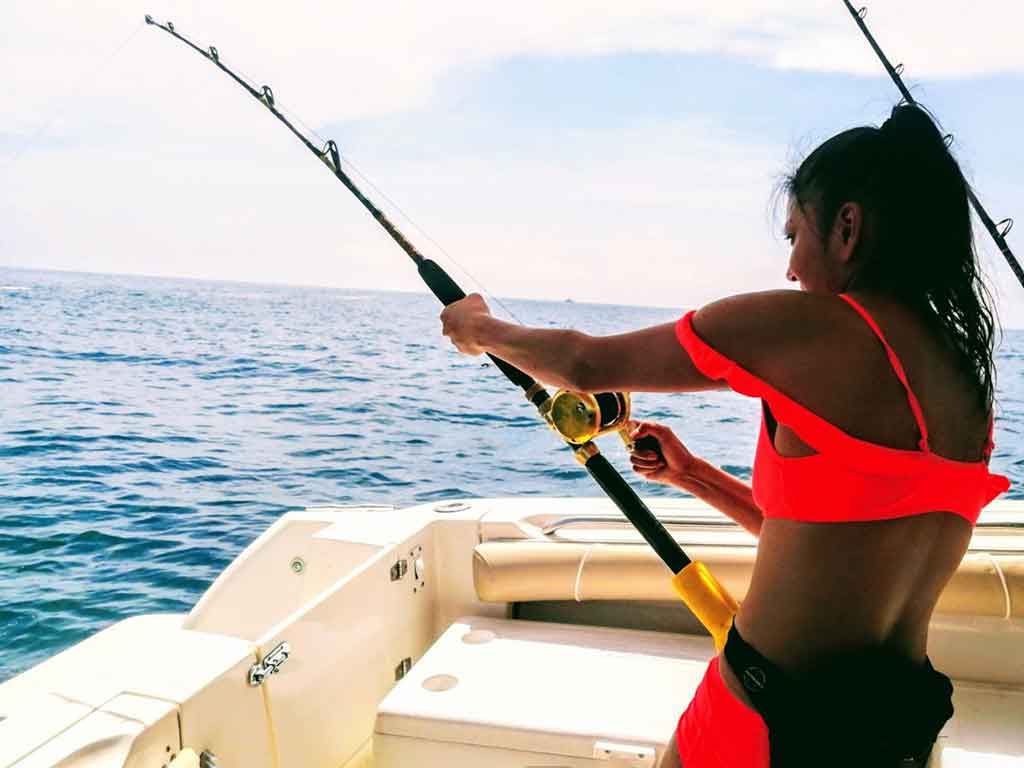
Marlin can be caught while casting and retrieving with conventional or fly tackle. Trolling techniques are still deployed in most cases to attract the fish. When you find the Marlin, you can start trailing trolling rigs, then retrieve them so you can cast. The trolling rigs themselves are often set with hookless teasers in this scenario.
While casting is far less common than trolling, it’s an exciting way to hook a Marlin. You feel every bit of the initial grab and you better hold on tight because that first run is absolute chaos.
Where to Catch Marlin in Panamá
You can catch Blue Marlin on both coasts but Black and Striped Marlin are limited to the Pacific side. The Pacific has the majority of the fishing charters and lodges but we have also included some Caribbean in this list of Panamá Marlin fishing spots
Pinas Bay

One of the most famous saltwater destinations in the world lies in Pinas Bay. Situated in southern Panamá, this location is very remote and the entire region is sparsely populated. No road access exists in the Darien Jungle and you will arrive here via a flight from Panamá City and a boat ride to the lodge. Tropic Star is the primary lodge operation serving this area. It has some of the best fishing access anywhere on earth.
Gulf of Chiriqui
Both nearshore and offshore fishing options are robust around Isla Parida – extending outward to the Hannibal Bank. You don’t have to travel far from land to begin fishing for Mahi Mahi, Dorado, Roosterfish, and a number of other species. There are great lodges and day charters serving this region as well.
Hannibal Bank
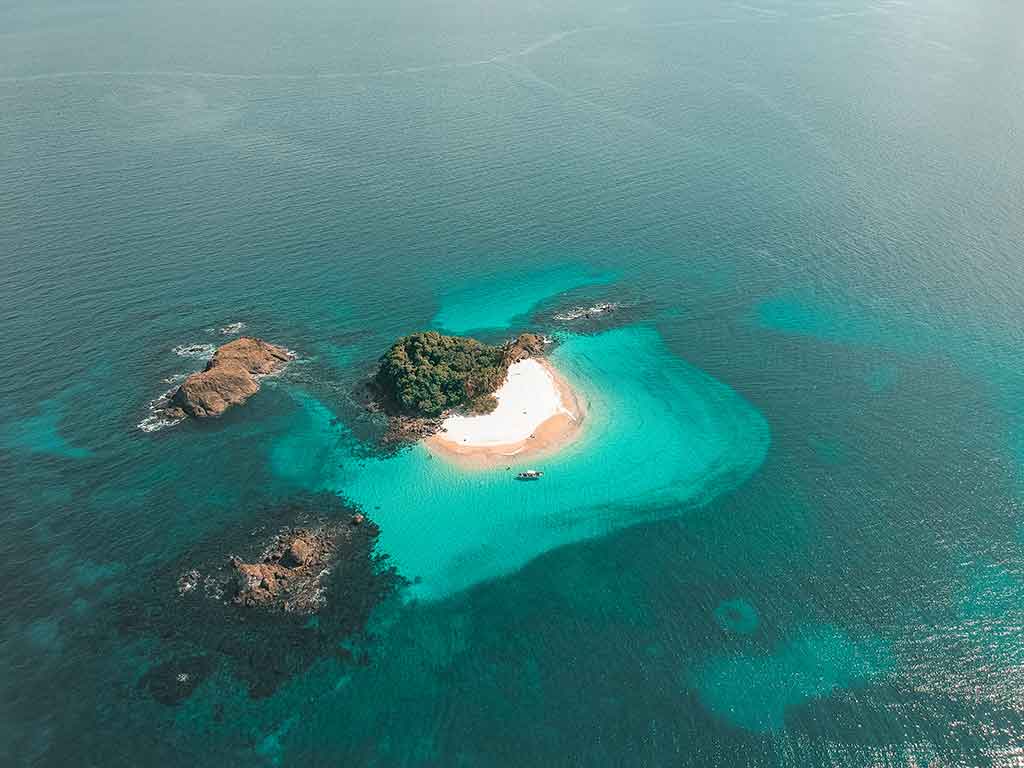
Globally renowned for its ecosystems and pelagic species, the Hannibal Bank is a great place to find and catch Marlin in the Pacific Ocean. It’s west of Panamá City and south of the coastline. Coiba Island is a major marker if you’re looking at the map. The biomass in this area is very rich and the Humboldt Current delivers ideal conditions for everything from bait fish to giant Marlin.
Isla Montuosa
The Hannibal Bank sits between this island and Coiba Island, making the area a serious Marlin hotspot. You have deep water just off the island where Marlin congregate before shooting into the shallower water holding bonito, dorado, and a bunch of sport fish. You have the option to fish the structure and shallows between bouts with Marlin in this zone.
Panamá City
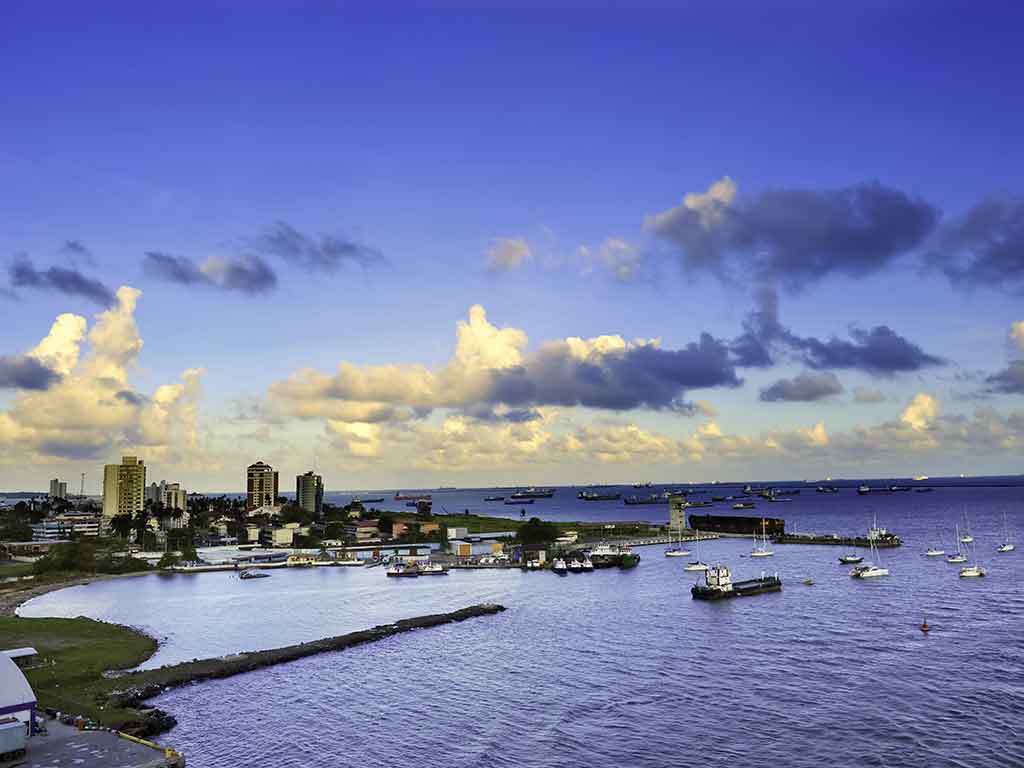
If you want ultimate convenience, Panamá City is a great option. You fly into a major airport, grab lodging just about anywhere, and find charters in Panamá Bay. Realistically, the Marlin fishing is better far to the south or farther north. Panamá Bay is a large area with great fishing but the rich ocean currents are a long drive from this location.
Bocas del Toro Archipelago
The Caribbean coast of Panamá has far less in the way of infrastructure for fishing and travel in general. You’ll see the Chiriqui Lagoon on the map. Don’t mistake this with the Gulf of Chiriqui fishery on the Pacific side! Bocas del Toro is a region that’s absolutely loaded with islands, reefs, and offshore locations where the depth drops rapidly from the coastline. Atlantic Blue Marlin are present offshore but finding a charter capable of reaching them is a challenge.
How to Plan a Panamá Marlin Fishing Trip
Panamá has the benefit of a good road system, large international airports, and great fishing lodges. Moreover, many of the lodges and charters cater to Marlin anglers. The big decision to make is between an all-inclusive lodge and a daily charter.
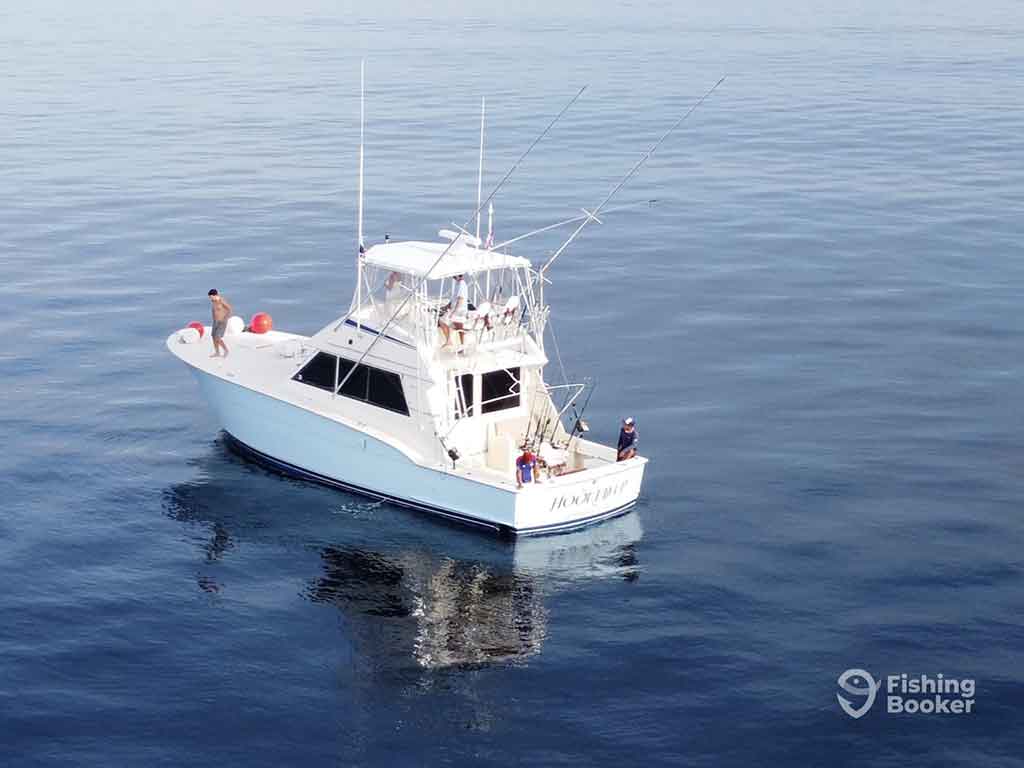
For budget-oriented travelers, you can book a reasonable vacation rental near a marina and utilize daily charters. It’s a great way to customize and control your trip and itinerary. That said, some of the lodges have a serious advantage with locations that have quicker access to offshore waters.
Most travelers will fly into Panamá City and this is a great place to spend a few days before or after your trip. The city has great food and is a fun place to explore. After reaching the city, you’ll either need to catch a domestic flight or use the road system to reach your destination. If you rent a car to drive from the airport, pay close attention to speed limits. There are plenty of speed traps set along the main highways.
Panamá Marlin Fishing: Get Ready to Chase a Record
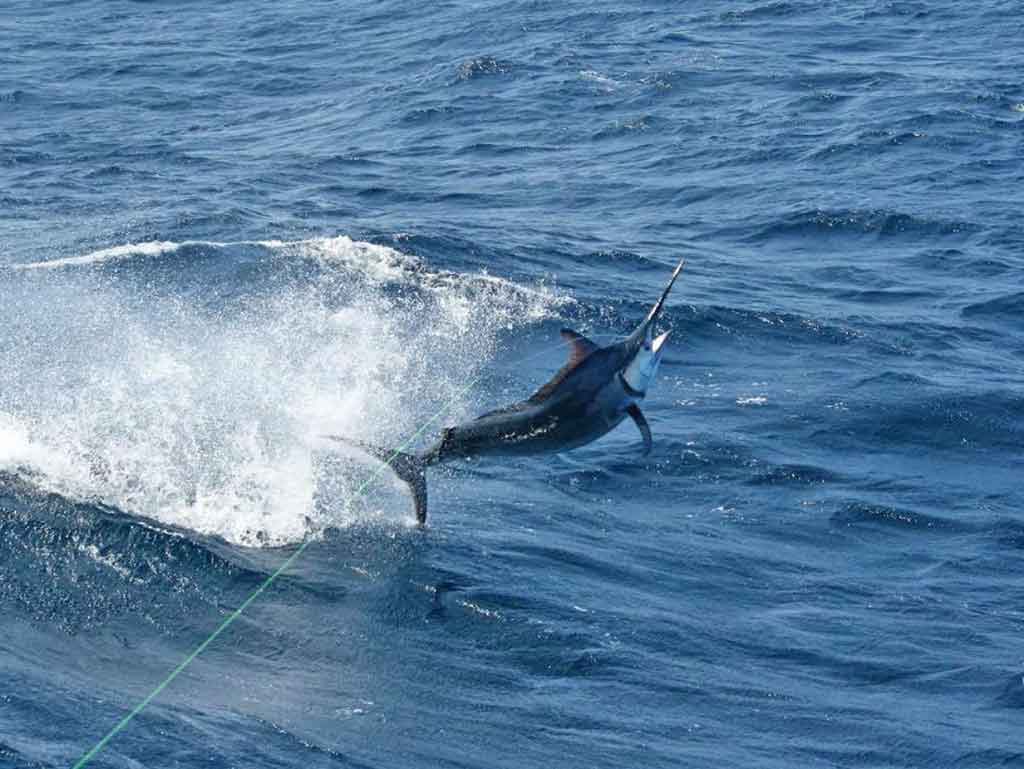
After booking a great fishing charter, planning your lodging, and making travel arrangements, it’s time to go fishing! Bring plenty of sun protection and enjoy the fantastic climate, food, and culture in this fantastic country. For record-chasers, either bring your own IGFA-certified record-keeping equipment or make sure your captain has everything on-board to record and submit a rare catch. Who knows what’s waiting out there?
Have you ever been Marlin fishing in Panamá? Where did you go? We’d love to hear all about your experience in the comments below!
The post How to Go Marlin Fishing in Panamá: An Angler’s Guide appeared first on FishingBooker Blog.
https://ift.tt/KtMUo3F
0 Comments
Enregistrer un commentaire